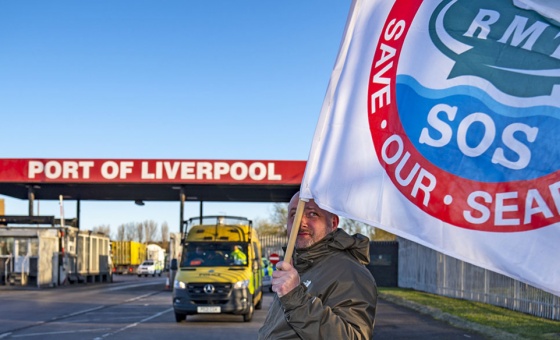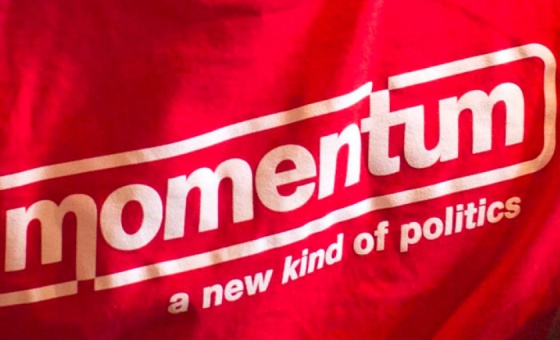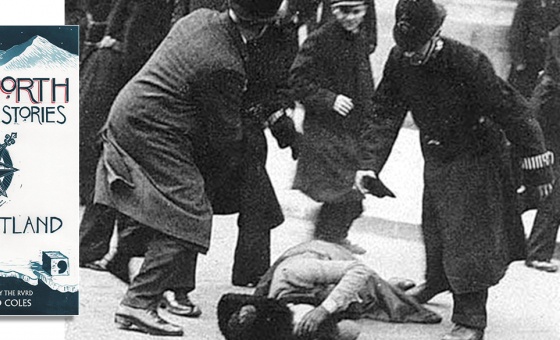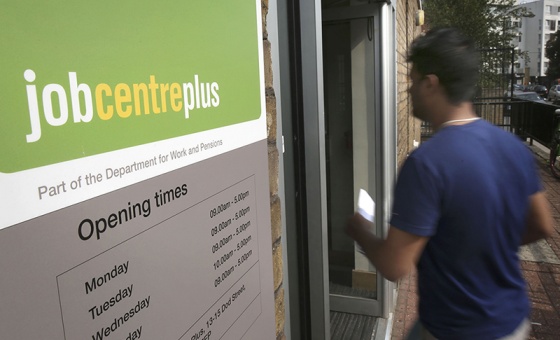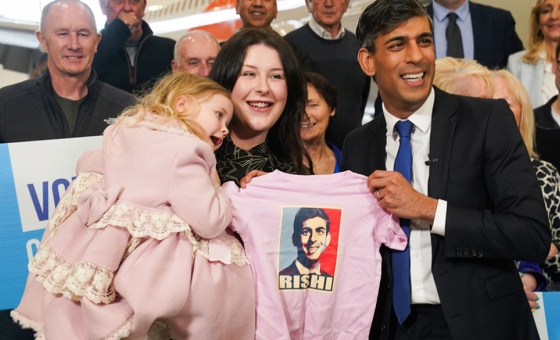This is the last article you can read this month
You can read more article this month
You can read more articles this month
Sorry your limit is up for this month
Reset on:
Please help support the Morning Star by subscribing here
AT AGE 78 Frank Gilfeather has lit up the boxing firmament these past few months, during which his social media footprint has grown exponentially to the point where he now boasts hundreds of thousands of followers and over a million views of his tutorial videos on the sport.
To watch him hit the bag in the gym is to watch the ageing process in reverse, such is the verve, power, balance and speed with which he goes about it.
Eloquent and as sharp as the proverbial tack, he is the best advertisement for a boxing life possible to conjure, making a strong case via the plethora of videos he’s published to date that “boxing is a force for good.”
It was my privilege to sit down for an online interview with Frank recently, during which he provided a veritable tour d’horizon of the boxing landscape, past and present. What ensued was a treat.
The product of a postwar working-class upbringing in Dundee’s sprawling Lochee, home then to the city’s substantial Irish immigrant population, Frank hails from a boxing family.
“Boxing has been in my blood since as far back as I can remember,” he said.
“My father boxed and ran his own gym when I was still a wee boy, and both my older brothers boxed up to a good amateur level.
“When I first started going to the gym to watch them, it was for babysitting reasons more than anything.”
Frank’s own journey in the squared circle saw him rise through the ranks to the point that at just 16 he was already training and sparring with seniors in their twenties.
“I really can’t emphasise enough how important it is to school young fighters properly. In my travels around boxing gyms doing seminars, I love the energy and enthusiasm of the young kids I teach.
“It really is a great pleasure to be able to pass on my knowledge and experience.”
Frank had 200 amateur fights and boxed for Scotland 17 times back in the 1960s with considerable success.
This was when the sport’s popularity in Britain was second only to football among the working class. His storied amateur career saw him box all over Europe, up to and including in the former communist East Germany in 1965, where he represented Scotland at the European championships that year.
“The East Europeans were tough. I mean, they really trained and prepared as if they were going into war.
“We trained hard, but we had to fit it in and around our jobs, and it wasn’t the same. But, still, those were wonderful days and experiences.”
By age 17, Frank’s talent saw him selected to be chief sparring partner of legendary Scottish world flyweight champion Walter McGowan.
“Walter’s dad, who himself had boxed under the name Joe Gans, saw me box in Fife one night and invited me to spar with his son.
“Walter was tremendously skilled. His footwork in particular was out of this world, and he was very difficult to hit.”
Being an Edinburgh man, I was keen to hear Frank’s recollections of the Scottish capital’s illustrious boxing son, Ken Buchanan.
“Ken was superb as an amateur. I remember fighting him at Leith Town Hall in Edinburgh in front of 1,200 people. Incredible atmosphere.
“He had that piston of a jab which he could keep going for an entire fight. It was hard to get under it. He beat me fair and square.”
The highlight of Frank’s boxing life came the day he found himself training alongside the great Sugar Ray Robinson.
“I was training in Hamilton with Walter, when his dad asked me to come back the following weekend to train at a different venue, St Cuthbert’s Church Hall. When I asked him why, he told me I would find out on the day.”
He goes on: “I arrived to find that the church hall had been decked out in boxing equipment, up to and including a full size ring.
“Then he arrived, Sugar Ray Robinson, and I couldn’t believe my eyes. For me, it was like coming face to face with Elvis or The Beatles, that’s how much it meant.”
Robinson was on a boxing tour of Europe at the time, desperate for money to pay an ever-hungry IRS back taxes in the US.
When I asked Frank what made Sugar Ray in his view the best to ever do it, he had no hesitation in answering.
“He had everything. He could box front foot, back foot, he could brawl if he had to. He really was ahead of his time.”
The burning question I wanted to ask at this point is why Frank never turned professional himself.
“Well, that may have happened. When Walter McGowan won his world title, I was at a dinner in Glasgow set up to celebrate it. I was at a table in the company of a group of Scottish professional fighters who were active at that time.
“Also at the table was a guy called Peter Keenan. He’d been a very good boxer in his day and was now a promoter.
“During dinner, he mapped out my future as a pro, telling me that I’d be boxing down in London, here in Scotland, and so on.
“When he finished, I turned to him and said: ‘Well, Peter, that’s all well and good, but looking round this table, the only person I see in a mohair suit and drinking Napoleon brandy is you’.”
Frank’s second act, post-boxing, saw him enter journalism in Aberdeen, his adopted home town.
There he amassed more creditable achievements writing for newspapers on sport and current affairs.
He also had a long run as a broadcast journalist on television, during which he covered the exploits of the great Aberdeen side managed by Alex Ferguson in the 1980s.
His third act as a social media star has prompted him to design his very own boxing gloves under the imprimatur of Frank’s Noble Art.
He can be found on Instagram @franksnobleart and at TikTok @gilfeather.
Check him out. It’ll be time well spent.



